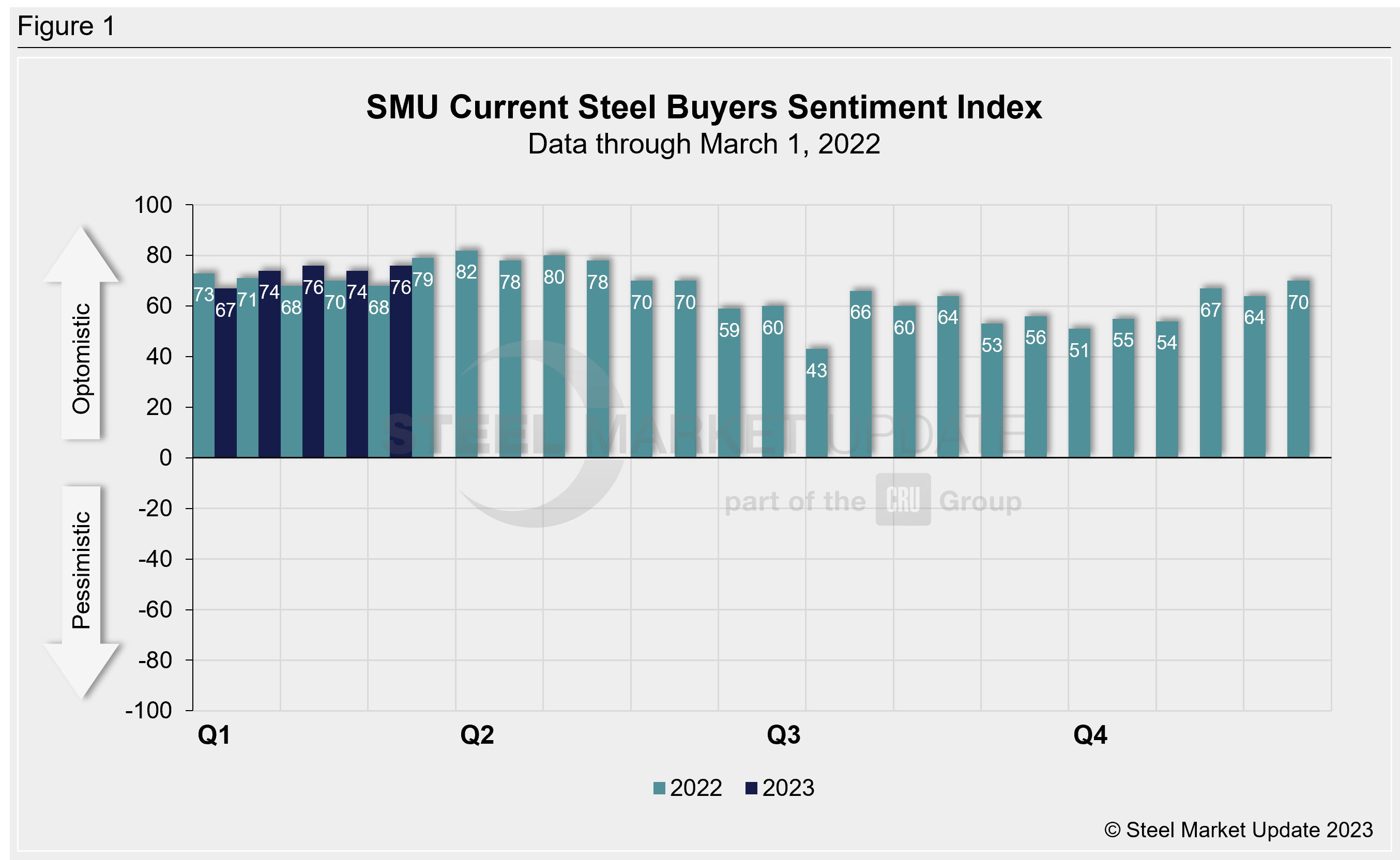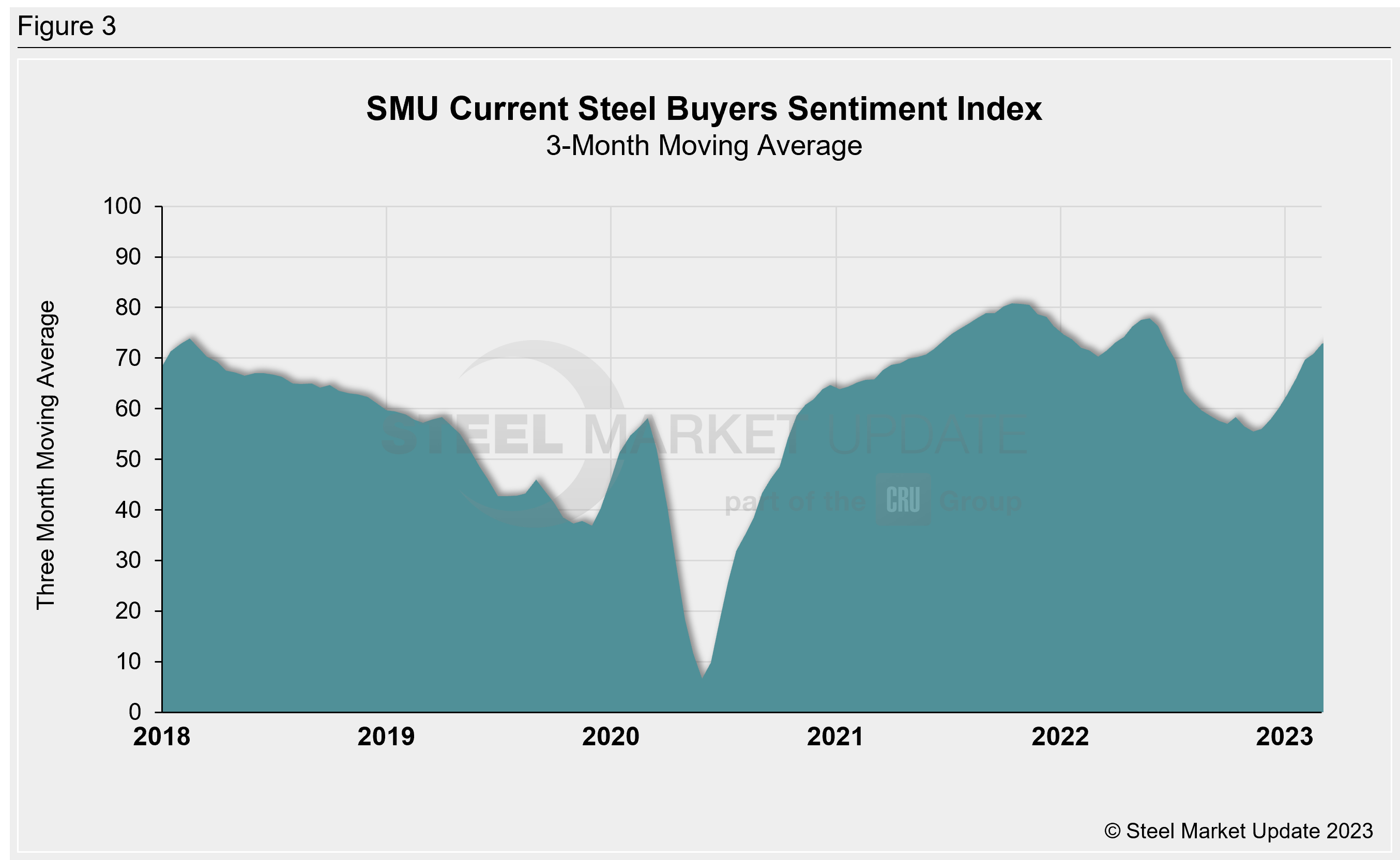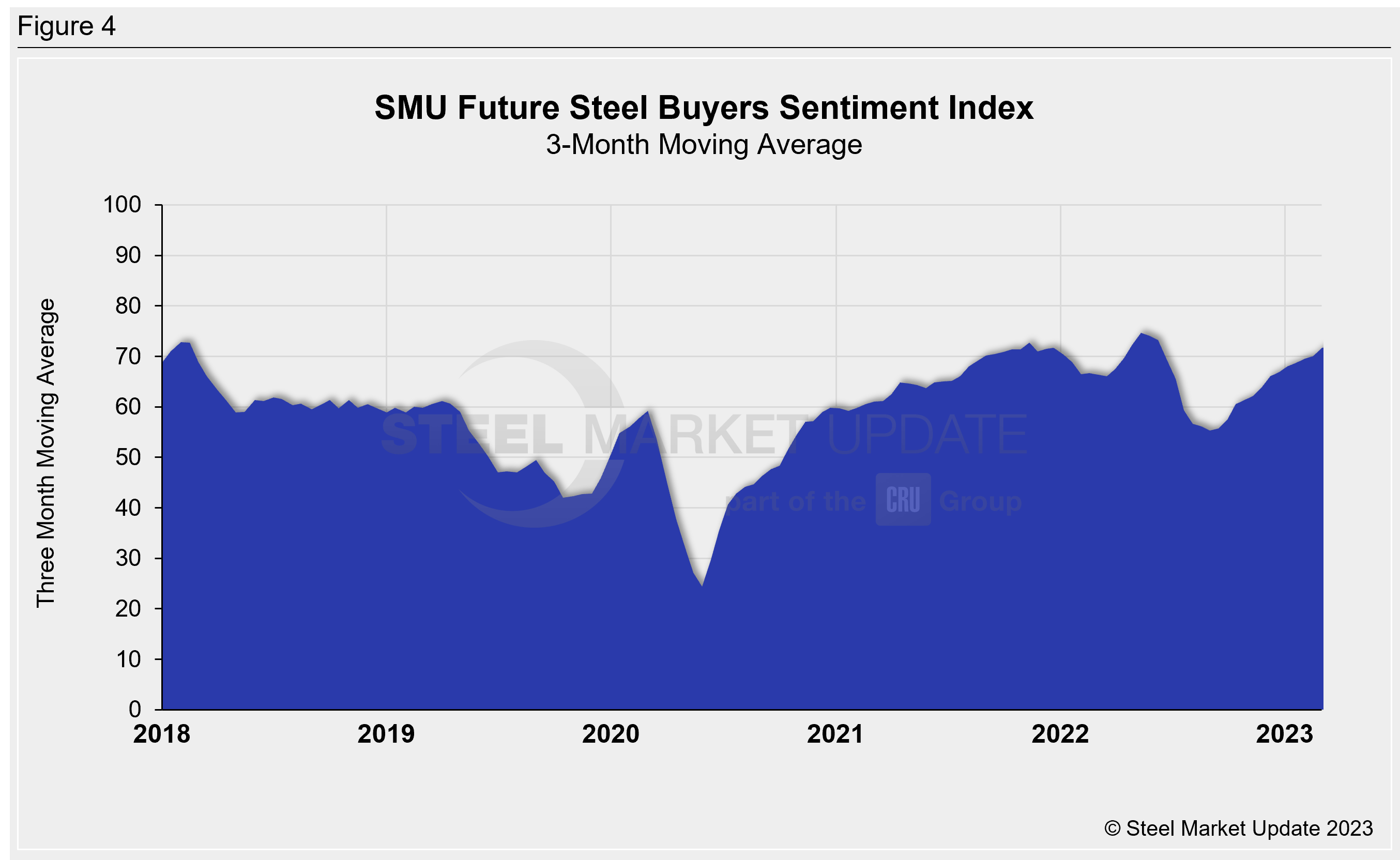SMU Data and Models
SMU Buyers Sentiment Indices Inch Upward
March 3, 2023
Both of SMU’s Steel Buyers Sentiment indices – one measures current sentiment and another future sentiment – ticked upward, according to SMU’s most recent survey data.
SMU’s Steel Buyers Sentiment Indices measure how steel buyers feel about their company’s ability to be successful in the current market, as well as three to six months down the road. Every other week we poll steel buyers about sentiment. We have historical data going back to 2008.
SMU’s Current Buyers Sentiment Index rose 2 points to +76 compared with the last market check (Figure 1). The index has been hovering in the mid-70s since the middle of January. Higher prices do not seem to have dampened buyer sentiment.

SMU’s Future Buyers Sentiment Index measures buyers’ feelings about business conditions three to six months in the future. The index edged up 4 points to +76 vs. the last market check. Future Buyers Sentiment had been slightly lower, in the 70s, since the middle of the new year.

Measured as a three-month moving average, the Current Sentiment 3MMA moved up 2 points to +72.83 compared to two weeks ago. (Figure 3).

The Future Sentiment 3MMA rose to +71.67 vs. +70.0 at the previous check. (Figure 4).

What SMU Survey Respondents Had to Say:
“Infrastructure spending will drive our market.”
“Some large projects will be awarded and required by June.”
“Too far out to predict conditions in this new steel era.”
“Three months excellent/six months very good.”
“Supply from imports is not competitive and limited.”
“Price increases will increase profitability for transactional business.”
“Q2 will be strong.”
About the SMU Steel Buyers Sentiment Index
The SMU Steel Buyers Sentiment Index measures the attitude of buyers and sellers of flat-rolled steel products in North America. It is a proprietary product developed by Steel Market Update for the North American steel industry. Tracking steel buyers’ sentiment is helpful in predicting their future behavior.
Positive readings run from +10 to +100. A positive reading means the meter on the right-hand side of our home page will fall in the green area indicating optimistic sentiment. Negative readings run from -10 to -100. They result in the meter on our homepage trending into the red, indicating pessimistic sentiment. A reading of “0” (+/- 10) indicates a neutral sentiment (or slightly optimistic or pessimistic), which is most likely an indicator of a shift occurring in the marketplace. Sentiment is measured via SMU surveys that are conducted twice per month.
We send invitations to participate in our survey to hundreds of North American companies. Approximately 45% of respondents are service centers/distributors, 30% are manufacturers, and the remainder are steel mills, trading companies, or toll processors involved in the steel business.
Click here to view an interactive graphic of the SMU Current Steel Buyers Sentiment Index and of the SMU Future Steel Buyers Sentiment Index.
By Ethan Bernard, ethan@steelmarketupdate.com
Latest in SMU Data and Models

SMU’s June at a glance
A look at SMU data for the month of June.

SMU Survey: Buyers’ Sentiment rebounds from multi-year low
Both of SMU’s Steel Buyers’ Sentiment Indices edged higher this week. Current Sentiment rebounded from a near five-year low, while Future Sentiment rose to a two-month high

SMU flat-rolled market survey results now available
SMU’s latest steel buyers market survey results are now available on our website to all premium members.

SMU Survey: Sheet lead times pull back after early-June blip, plate holds
Following the uptick seen two weeks ago, lead times eased this week for all four sheet products tracked by SMU, while plate lead times held steady, according to this week’s market survey.

SMU Survey: Pricing power abruptly shifts to steel buyers
The majority of steel buyers responding to our latest market survey say domestic mills are more willing to talk price on sheet and plate products than they were earlier this month. Sheet negotiation rates rebounded across the board compared to early June, while our plate negotiation rate hit a full 100%.
